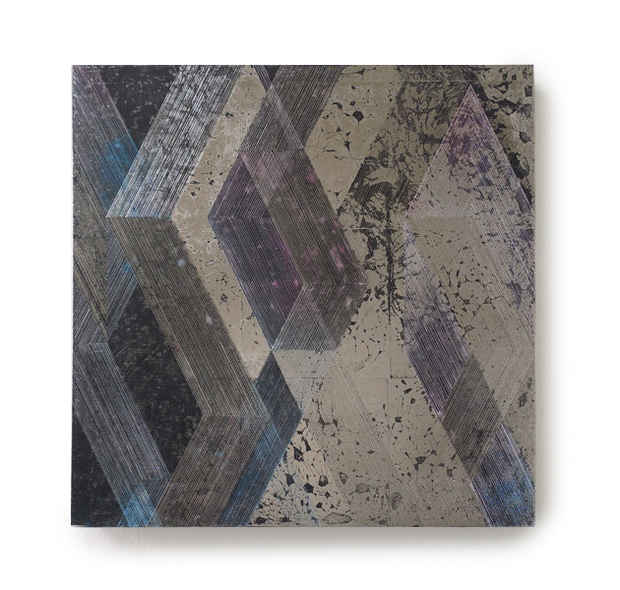Yoshiaki Mochizuki Exhibition
Marlborough Chelsea

This event has ended.
Mochizuki’s exquisite small-scale works reference the tradition of geometric abstraction while transforming how we experience paintings, making them explicitly contingent on both their setting and the moving body of the viewer. The direction and the quality of the light, the color of the room’s walls, the unusual height at which they are hung, and the angle from which the viewer looks at the paintings’ surfaces all dramatically affect what will be seen.
Mochizuki’s works are built up, layer upon layer, of gesso, dye-based ink, tinted clay, and palladium leaf. The top layer doesn’t dominate those underneath; rather the layers coexist as a result of the artist’s burnishing, scratching, and pulling off parts of the surface with tape. Complex constellations of parallel or radiating burnished lines create a polyphonic effect upon the regular grid of sheets of palladium leaf. From different vantage points the palladium catches the light differently, and the geometric patterns change, reverse themselves, and suggest varying illusions of depth.
Mochizuki accentuates the complex textured surfaces of his paintings, the tactile quality those surfaces suggest, and the reflections that each painting creates in order to emphasize that the viewing experience includes duration, bodily movement, and repetition. In order to truly encounter this work, you must be in its actual presence, where you might catch a glimpse of your own image on the surface or a change in the painting’s tint because of the colors of the clothes you’re wearing. As a result, these paintings possess no single, definitive image. A photograph—or viewing a work from a single vantage point—will produce only one moment in a range of possibilities. These are situational works, about both the relation of the viewer to the painting and that of the painting to the circumstances in which it is seen.
Although carefully planned and meticulously executed, Mochizuki’s paintings are nevertheless chance determined. The natural materials used in traditional gilding are unstable (even the weather affects them), but Mochizuki welcomes and incorporates their unpredictability and inconsistency. More than that, he exacerbates the indeterminacy by “damaging” the surfaces—scratching them and ripping portions away with tape. Thus, the work’s contingency is a matter of its making as well of its viewing.
It is noteworthy in this regard that Mochizuki was trained in his youth to become a classical pianist. He has noted the similarity of his paintings to Bach fugues based on the rules of counterpoint, in which several lines (or voices) reflect each other like mirror images of a phrase, or chase each other in a canon on a strictly divided 12- tone scale. In spite of the nearly mathematical precision of Bach’s music, however, playing it on a clavichord—the instrument on which Bach usually composed—will sound different depending on the tiniest change of pressure applied to the keys. This is a useful analogy for the nuances of pressure Mochizuki applies with his burnishing tools as he incises thousands of lines onto the surface of his paintings. To make the contingency all the more pronounced, Mochizuki finishes with a technique closer to Cage than to Bach by ripping away portions of his carefully calibrated surfaces.
Media
Schedule
from January 10, 2013 to February 16, 2013
Opening Reception on 2013-01-10 from 18:00 to 20:00